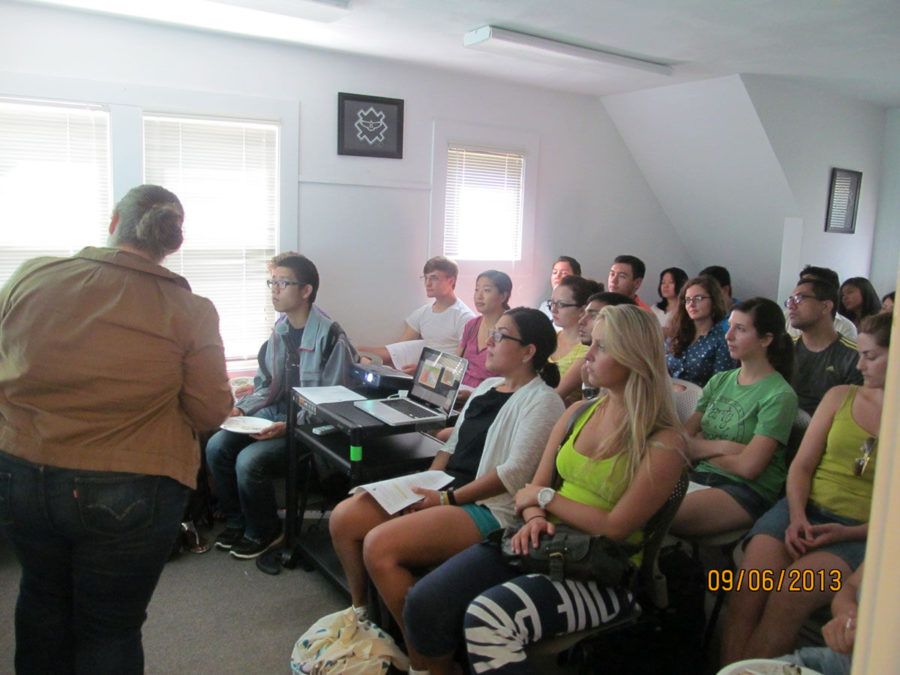Lessons From The Soil at Native American House
September 4, 2014
The earth often offers more than just food and sustenance to society. On Friday, it will also be giving people a history lesson at the Native American House during the Lessons From the Soil Chat ’N Chew.
Seven different units participate in the Office of Inclusion and Intercultural Relations’ lecture series called the Chat ’N Chew. The series aims at promoting dialogue among the campus community on topics pertaining to diverse cultures. From noon to 1 p.m., the Native American House will have food and drinks for people to enjoy as they listen to a presentation given on what soil does for society and the community and how much of Midwestern pioneer life relied on adopting Native American geographies and ways of life.
The speaker, David Horst Lehman, a third-year Ph.D candidate in the University’s history department, got interested in soil because of his hometown.
“I grew up in Goshen, Indiana, in Elkhart county, and there I stumbled upon two maps — one was a soil map that showed a patch called Elkhart prairie in the middle of the woods and the other showed what years people bought land patents from the U.S. government,” Lehman said. “A Potawatomie village had been in that area for the rich soil, and that land provided soil to grow corn and timber to makes homes.”
In regards to soil, Lehman said that “it’s important to think about it as not just a natural resource that showed up out of nowhere, but something that had to do with how native people were living in the area.”
Get The Daily Illini in your inbox!
Beverly Smith, assistant director of the Native American House, said that having discussions like these are enriching.
“I think it’s important for students or anyone that’s interested in wanting to inform themselves about Native American people, cultural history and issues,” Smith said. “Our mission is to present this information in a positive and accurate way so that all who attend gain a realistic perspective of Native American people.”
Aroob Askari, senior in AHS, said that she would definitely be interested in attending a discussion like this.
“You never think about something like soil and how it affects the environment,” Askari said. “It would be interesting to learn more about something like that and also Native American culture along with it.”
In Lehman’s lecture, he will discuss how Native American people changed the soil and in turn changed the environment, and how the environment they changed was the land that settlers wanted to settle in. He said it is important to look at the relationship between what is going on in the soil, in plant life and in people’s lives, and how they are all interrelated.
Lehman said that growing up, he took advantage of the rich soil that was in his backyard. While he could dig a one-foot hole and find soil that cultivated growth and life, he did not realize that other people in other places had to pay for the soil he had for free in his yard.
He said he wants people to understand and appreciate the impact of Native Americans and the soil that resides in their very own community.
“Here at Illinois, we’ve got the Morrow Plots and we’re big on agricultural science and stuff. I just want that to seem very connected to this history of native settler interaction. Things like the corn and the soil are big themes for life around this country, but it’s something that’s older then the United States,” Lehman said.
Saher can be reached at [email protected].







